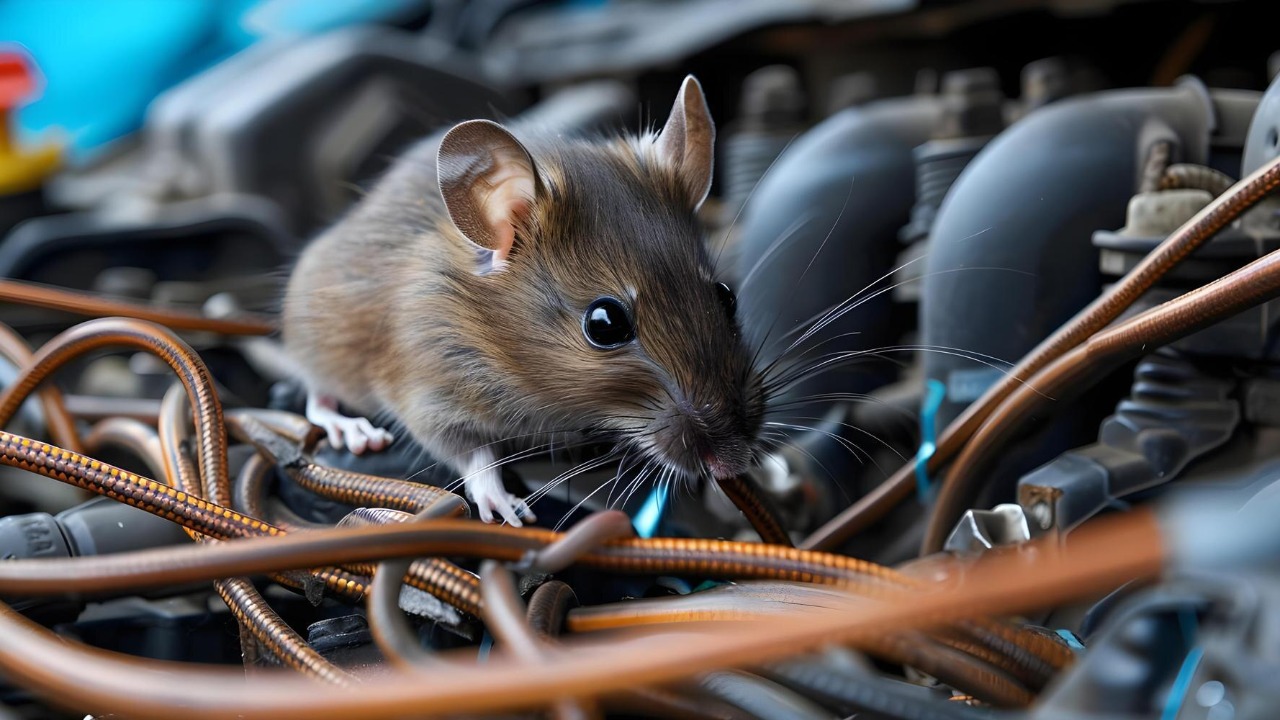
Across Chicago, a growing problem is causing serious headaches for car owners. Rats are infesting vehicles, gnawing on critical components and leading to costly repairs. This rodent issue is turning a simple parking spot into a potential financial nightmare.
The Appeal of Car Wires to Rats
Modern car wires are not just a random target for these rodents. They are coated with soy-based insulation, which has an appealing scent and texture that attracts rats. This is particularly true in urban environments where rats have adapted to find food sources in unlikely places. The warmth and shelter provided by parked cars, especially under the hood, further encourage rats to nest and chew nearby materials.
Moreover, the rubbery coating of electrical wiring mimics natural edibles like nuts or bark. This makes it a preferred target over other vehicle parts, which may not offer the same combination of appealing texture and potential nutritional value.
Biological Reasons for Rodent Chewing
Rats have a biological need to constantly gnaw. This is because their incisors continue to grow throughout their lives, and gnawing helps to wear them down. Durable materials like car wires are ideal for this purpose. Furthermore, nutritional deficiencies or teething in young rats can amplify the urge to chew synthetic substances, including vehicle insulation.
Environmental factors also play a role. Urban food scarcity, for instance, can push rats toward unconventional sources like soy-coated wires. These wires serve a dual purpose for rats, providing both nutrition and a means of dental maintenance.
Signs Your Car Has Been Targeted by Rats
There are several signs that your car may have been targeted by rats. Visible chew marks or frayed insulation on wires under the hood are early indicators of rat activity. The presence of droppings, nests made from shredded materials, or unusual odors near the engine bay are also telltale signs.
Furthermore, dashboard warnings like electrical malfunctions or starting issues can signal deeper wire damage from rodent gnawing. These signs should not be ignored, as they can lead to more serious problems if left unaddressed.
Real-World Impacts of Rat Damage
The impact of rat damage can be significant. In Chicago, for example, rats have caused serious damage to vehicles citywide, prompting drivers to seek ways to get rid of rats and prevent infestations. In one case, a rat ravaged a car on December 20, 2023, leading to thousands in repair bills.
The broader economic toll includes insurance claims and downtime for affected vehicles in high-rodent areas. This highlights the importance of taking proactive measures to protect your vehicle from rodent damage.
Effective Prevention Strategies
There are several strategies that can help deter rats from targeting your car. Parking in well-lit, elevated areas away from rodent-prone spots like dumpsters can make it more difficult for rats to access under-hood spaces. Using rodent-repellent sprays or tapes infused with capsaicin on wires can also be effective, as advised by Consumer Reports.
Installing mesh barriers or ultrasonic deterrents around the engine compartment can physically block rat entry. These measures can be particularly useful in areas with high rodent populations.
DIY and Professional Fixes for Protection
There are also DIY solutions that can help protect your car from rats. Wrapping wires with bitter-tasting rodent tape or aluminum foil can make them unappealing to rats. Regular maintenance, such as cleaning the engine bay and using natural repellents like peppermint oil, can also help deter rats.
In severe cases, hiring pest control services for thorough inspections and baiting may be necessary. These professionals can provide valuable advice on how to prevent rat infestations and can help ensure that your vehicle is protected from future damage.
Responding to Existing Rodent Damage
If your car has already been damaged by rats, there are steps you can take to address the issue. Disconnecting the battery and inspecting wires for safety should be your first steps before driving a potentially compromised vehicle. Repair options range from splicing damaged wires to full replacements, and it’s worth checking your insurance coverage for rodent-related claims.
Following up with prevention measures is also crucial. Combining mechanical barriers with ongoing monitoring can help avoid repeat incidents. As the saying goes, an ounce of prevention is worth a pound of cure, and this is certainly true when it comes to protecting your car from rats.
More from MorningOverview